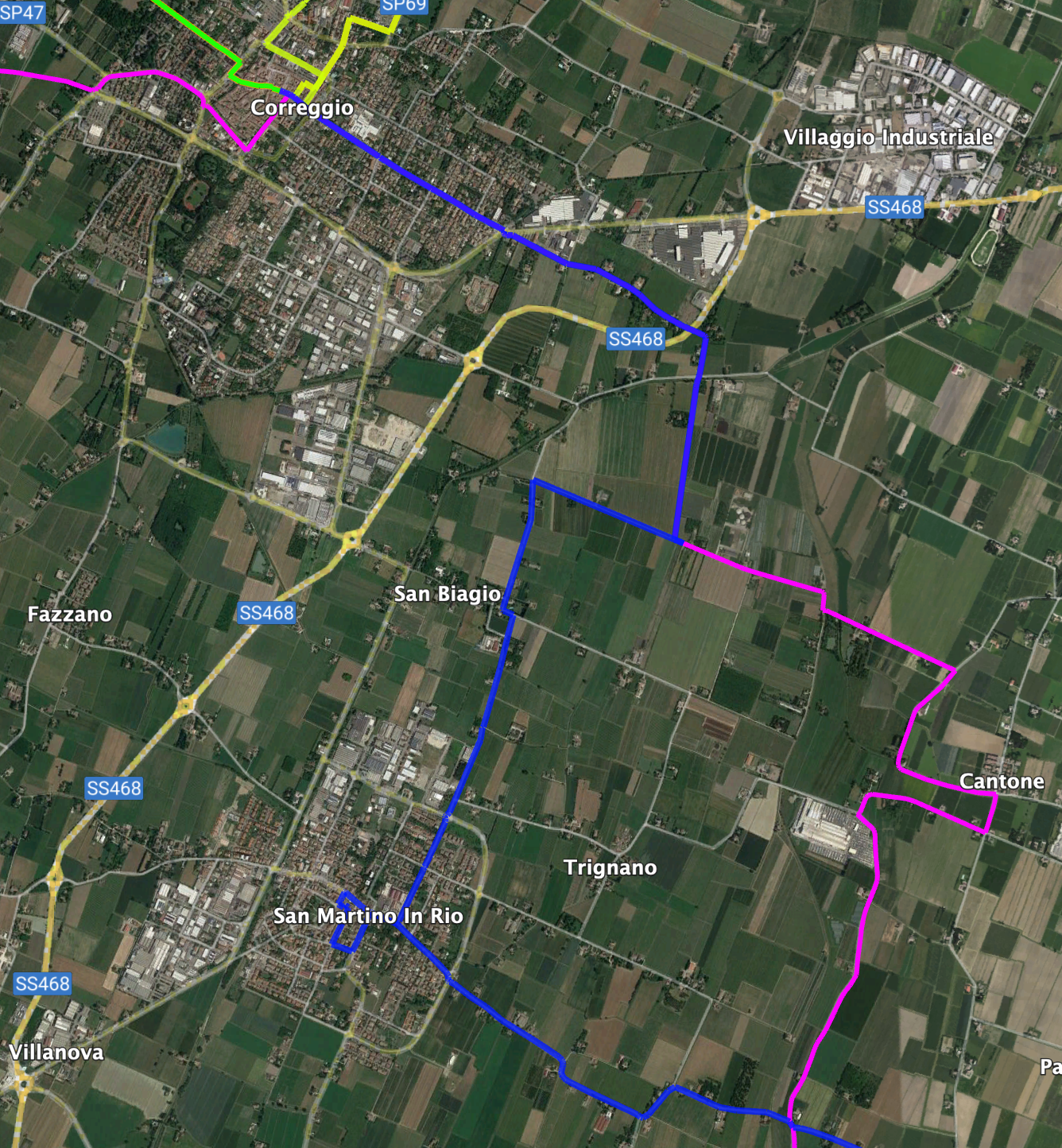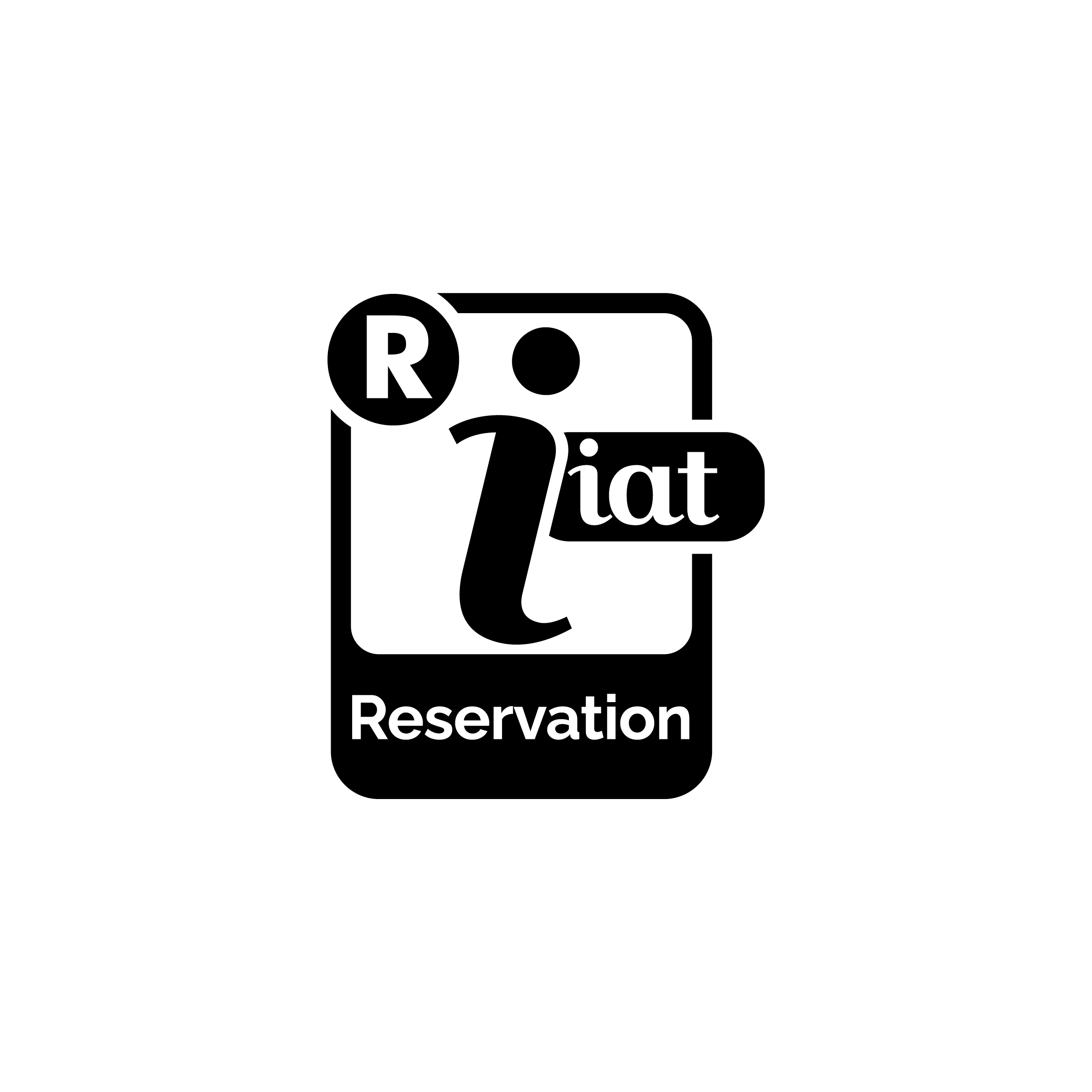Dukes Ringroad
Route analysis
Route length: 65,6 km. This route is completely flat, with many segments on cycling paths. Route with low difficulty. It is possible to follow smaller segments of the route. Please pay attention at crossroads, roundabouts and pedestrian crossings.
Please pay particular attention on this main road segment:
- Scandiano: part of SP37, exiting the village of Pratissolo. Estimated segment length: 750 metres.
route description
Along the centuries, these places had a plethora of noble families and rulers that left marks on the territory and in the History itself. Some families, though, remained a lot in charge, such as the Este or the Gonzaga, modelling the artistic and cultural heritage of these areas, resulting in being in a strong position in the whole nobleness panorama of Europe.
This route wants to retrace the places where Este and Gonzaga Families used to live, where they left a mark on the local culture and local landscape. We start this route from Scandiano, at the ancient Rocca dei Boiardo, official residence of the homonymous Boiardo family. This Castle was built in the 12th century from the Da Fogliano family, then taken by the Boiardo family in 1423 and perpetually occupied for 137 years. With a very notable value, we have to acknowledge the majestic gardens, the Estense Apartment with the great wide stairs and the ground floor Rooms, finely decorated with vivid frescoes.
With a notable artistic value, we remark also the San Giuseppe Church, in an exquisite Baroque style.
We then exit Scandiano, heading to Pratissolo and Fogliano via SP37, and then safely taking the cycling path on the side of the road.
We then arrive in the main city of Reggio Emilia. Across more than two centuries of stable permanency, the Este family brought high cultural radiance and a fine artisanal craftsmanship, still very appreciable nowadays. It is possible to follow all this historical gems in a dedicated itinerary in the city centre in the "Walk to the Este Delights", from the historical centre to the Rivalta Palace and beyond, arriving to Villa d'Este and Corbelli Pond.
An unmissable stop in the city is in the Basilica of the Holy Virgin of the Ghiara, precious jewel and masterpiece of the Baroque Era. It is called "of the Ghiara", as this was the Old Italian word for "ghiaia" (gravel, small rocks, shingles), because here the Crostolo River used to flow, before being deviated outside the city centre to preserve it from flooding and disruptions. Initially, this place was a monastery, and then extended to be a church dedicated to the Nativity. In 1569, Novellara-born painter Lelio Orsi started the drawing of the Cantone dei Servi fresco (now exhibited in the museum next to the Basilica), but he did not manage to finish the main work.
The 29th of April of year 1596, here a miracle happened: a young boy, deaf-and-mute from his birth, was intensely praying to the Virgin Mary, he miraculously regained hearing and word, and after the verification of Pope Clement VIII, it was granted the possibility to build a new temple dedicated to the Virgin Mary.
The Basilica is a Greek-cross church with the grade of Minor Basilica. It was built from the 6th June, 1597 and inaugurated on the 12th May, 1619 with a sumptuous ceremony: this was the beginning of Giaréda, the traditional fair of Reggio Emilia (which has a very particular story that you can find here).
Inside the church we can find the finest frescoes of Emilian painters, among these also Guercino's works. The main fresco of the dome is made by the Bologna-born Lionello Spada, while the vaults around represent a cycle of frescoes with scenes from the Old Testament. You can also download the app of the Basilica on your App Store (or following the QR codes on the informative panels), and you can control directly all the lights of the church from your phone, with also a small guide that illustrates the different frescoes and works of art, guiding you in an immersive experience in this art jewel.
Outside the city, in the Rodano Stream Park, it is possible to admire the ancient residency of the Mauriziano, the summer house of the Italian author Ludovico Ariosto. This is a civilian work of art of 17th century with animal-like decoration, in the extravagant taste of that time.
We then exit from the city and we reach Bagnolo in Piano. Here the ancient buildings of the Gonzaga family were destroyed during the Napoleon wars by the French, leaving intact only the Torrazzo (the big tower in the town centre), last relic of the Gonzaga Court, that here had one of the many cadet branches of the great Mantuan family.
Among dirt tracks and vegetation, we arrive in Correggio, small capital of the Correggio County (then upgraded to Principate) and subsequently absorbed in a part of the Estense Duchy. Here we can find the Palazzo dei Principi (Princes Palace), built in 1508 by Francesca Von Hohenzollern, countess of Correggio and widow to Borso da Correggio, from the German part of the Gonzaga family. During the centuries was left degradate, but a major restoration permitted to the palace to return to its ancient radiance. Now is home to the municipality offices and to the museum dedicated to Antonio Allegri (also known as il Correggio), famous painter who worked at the most beautiful works of art in Parma.
Taking a slight detour from the main route, we can deviate to San Martino in Rio, following the other route available on our website "Crossing the high plains", where we can admire the majestic Rocca Estense. This castle initially belonged to the Canossa family, but Frederick Barbarossa, during his invasion of Italy destroyed it. Was rebuilt by the Roberti family, and then acquired by the Este family. Today is home to many cultural events, and it is possible to visit the insides for free.
Back on the main route, we cross the A1 Motorway and the High Speed railroad. We then arrive in Rubiera. Here the noble marks are hidden or canceled, leaving only few signs visible. The Ospitale Court and what remains of the fortress let imagine the grandiosity of these places. While the first place is home to many cultural events and theatrical representations, the other one is left to degradation and only a small part is visible only from the outside.
Going back to Scandiano, we cross the village of Arceto, where the homonymous castle was one of the great residencies of Da Fogliano and Boiardo families. The Municipality of Scandiano owns partially the castle, and we can visit it only with a reservation beforehand.
We then conclude our route where we started a few hours ago, from the main square in front of the Rocca dei Boiardo.
How to arrive
It is possible to follow smaller segments of this route, starting for one of the passing points. You can follow the GPX tracks (for GPS devices and mobile-supporting apps), KML (for Google Earth) or the map in PDF.
Arriving in Scandiano:
- by car: from Reggio Emilia via SP467R to Scandiano. From Modena via SS9 Via Emilia until the village of Bagno, then turn left on SP52 to Scandiano.
- by train: From Reggio Emilia FS take the Regional train on the Reggio-Sassuolo Radici line and get off in Scandiano. From Modena take the Regional train on the Modena-Sassuolo Terminal line until the end of the line in Sassuolo, then walk for 150 metres to reach the station of Sassuolo Radici, take the Regional train from Sassuolo Radici to Reggio, then get off in Scandiano.
Arriving in Bagnolo in Piano:
- by car: from Reggio Emilia take the SP3 to Bagnolo-Novellara
- by train: from Reggio Emilia FS take the Regional train on the Reggio-Guastalla line and get off in Bagnolo.
Arriving in Correggio:
- by car: from Reggio Emilia via SS722 Tangenziale di Reggio, take the exit no.2 for Modena/Brennero/Carpi/Correggio/S. Martino In Rio, then take SS468 to Correggio.
- with public transportation: from the Bus Station in Reggio Emilia - Piazzale Europa take bus no. 82 to Carpi and get off in Correggio.
Arriving in Rubiera:
- by car: from Reggio Emilia via SS9 Via Emilia to Modena. From Modena via SS9 Via Emilia to Reggio Emilia.
- by train: from Reggio Emilia FS take the Regional train on the Milano-Bologna line to Bologna C.le/Rimini/Pesaro/Ancona and get off in Rubiera.
tracks and maps
Map in PDF (directly downloads the PDF)
GPX (for GPS devices and mobile-supporting apps)
KML (for Google Earth)
Detour from the pink route from Correggio to San Martino in Rio, following the blue route to San Martino until the intersection with the pink route, south of the village of Cantone.






